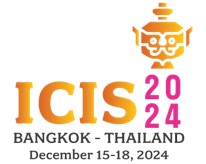Loading...
Paper Number
1064
Paper Type
Short
Abstract
The rapid evolution of avatar-related technologies provides extensive opportunities for diverse avatar applications in various areas. This study aims to investigate the innovative use of avatars to mitigate virtual conferencing fatigue, which refers to the physical and mental exhaustion from the inappropriate use of virtual conferencing applications. Grounded in Self-Awareness Theory, the research compares the impact of using real faces and user-look-alike avatars on virtual conferencing fatigue, delving into its underlying factors. In addition, the study examines the role of facial attractiveness enhancement on virtual conferencing fatigue. Laboratory experiments with a 2-by-2 between-subject design are employed to test hypotheses. The study extends the Self-Awareness Theory to user-look-alike avatars in virtual conferencing scenarios. The findings will provide valuable insights for organizations and individuals, offering a fresh perspective on the potential form of virtual conferencing.
Recommended Citation
Liu, Yuxin; Siau, Keng Leng; Wang, Xueqing; and Yang, Guo-Rui, "Virtual Conferencing Fatigue: Look-alike Avatar and Facial Attractiveness" (2024). ICIS 2024 Proceedings. 2.
https://aisel.aisnet.org/icis2024/humtechinter/humtechinter/2
Virtual Conferencing Fatigue: Look-alike Avatar and Facial Attractiveness
The rapid evolution of avatar-related technologies provides extensive opportunities for diverse avatar applications in various areas. This study aims to investigate the innovative use of avatars to mitigate virtual conferencing fatigue, which refers to the physical and mental exhaustion from the inappropriate use of virtual conferencing applications. Grounded in Self-Awareness Theory, the research compares the impact of using real faces and user-look-alike avatars on virtual conferencing fatigue, delving into its underlying factors. In addition, the study examines the role of facial attractiveness enhancement on virtual conferencing fatigue. Laboratory experiments with a 2-by-2 between-subject design are employed to test hypotheses. The study extends the Self-Awareness Theory to user-look-alike avatars in virtual conferencing scenarios. The findings will provide valuable insights for organizations and individuals, offering a fresh perspective on the potential form of virtual conferencing.
When commenting on articles, please be friendly, welcoming, respectful and abide by the AIS eLibrary Discussion Thread Code of Conduct posted here.



Comments
09-HTI